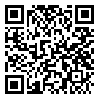BibTeX | RIS | EndNote | Medlars | ProCite | Reference Manager | RefWorks
Send citation to:
URL: http://jbrms.medilam.ac.ir/article-1-39-en.html
Introduction: Rabies is one of the most important infectious diseases and animal bites are increasing in Iran. Due to the significance of the subject, the current study was designed and conducted with the aim of determining Animal bite status and its contributors in Aq-Qala district, Golestan province, Iran.
Materials and methods: This is a data-based study with descriptive approach carried out in Aq-Qala from Feb/March 2010 to Feb/March 2011. 1025 cases of animal bites registered in rabies treatment center of Aq-Qala city were selected using census method. Data were collected using a reliable and valid Checklist. Data were entered into SPSS18 software and analyzed through descriptive statistics.
Results: 74.7% of studied cases were male. Their mean age was 25.7±17.8 years. Most bites occurred among adolescents and students (21.6%). Most bites occurred on foot and mainly in rural areas (81.5%). 40 %of bites occurred from 12 a.m. to 6 p.m. Most cases of animal bite were by dogs (94.4%). The injuries were superficial in 90.1% of cases. The animal bites occurred in 78.2% of cases on clothes. Most bites occurred in spring, in June. The incidence rate of animal bites was 854 cases per 100000 people.
Conclusion: Due to the high prevalence of animal bites in males, adolescent, students, rural areas and in spring, we recommended appropriate intervention, especially educational intervention in men, adolescent, students, rural area and in spring to decrease the prevalence of animal bites.
Received: 2014/01/3 | Accepted: 2014/06/17 | Published: 2014/10/14
| Rights and permissions | |
 |
This work is licensed under a Creative Commons Attribution-NonCommercial 4.0 International License. |




